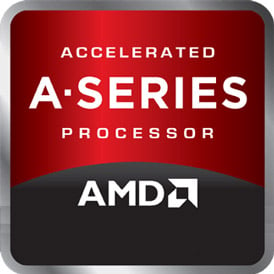 Geekbench 3, 64bit (Multi-Core)
Geekbench 3, 64bit (Multi-Core)
|
|
Intel Celeron G1840
2C 2T @ 2.8 GHz
|
4483
|
|
|
AMD A6-3500
3C 3T @ 2.1 GHz
|
3524
|
 Geekbench 3, 64bit (Single-Core)
Geekbench 3, 64bit (Single-Core)
|
|
Intel Celeron G1840
2C 2T @ 2.8 GHz
|
2556
|
|
|
AMD A6-3500
3C 3T @ 2.1 GHz
|
1279
|
 Estimated results for PassMark CPU Mark
Estimated results for PassMark CPU Mark
|
|
AMD A6-3500
3C 3T @ 2.1 GHz
|
1995
|
|
|
Intel Celeron G1840
2C 2T @ 2.8 GHz
|
1760
|
 Geekbench 5, 64bit (Multi-Core)
Geekbench 5, 64bit (Multi-Core)
|
|
Intel Celeron G1840
2C 2T @ 2.8 GHz
|
1220
|
|
|
AMD A6-3500
3C 3T @ 2.1 GHz
|
766
|
 Geekbench 5, 64bit (Single-Core)
Geekbench 5, 64bit (Single-Core)
|
|
Intel Celeron G1840
2C 2T @ 2.8 GHz
|
579
|
|
|
AMD A6-3500
3C 3T @ 2.1 GHz
|
303
|
 Cinebench R15 (Multi-Core)
Cinebench R15 (Multi-Core)
|
|
Intel Celeron G1840
2C 2T @ 2.8 GHz
|
198
|
|
|
AMD A6-3500
3C 3T @ 2.1 GHz
|
166
|
 iGPU - FP32 Performance (Single-precision GFLOPS)
iGPU - FP32 Performance (Single-precision GFLOPS)
|
|
Intel Celeron G1840
2C 2T @ 2.8 GHz
|
168
|
 Cinebench R11.5, 64bit (Multi-Core)
Cinebench R11.5, 64bit (Multi-Core)
|
|
Intel Celeron G1840
2C 2T @ 2.8 GHz
|
2.4
|
|
|
AMD A6-3500
3C 3T @ 2.1 GHz
|
1.9
|

